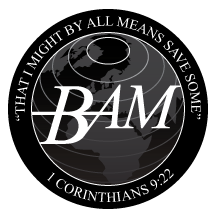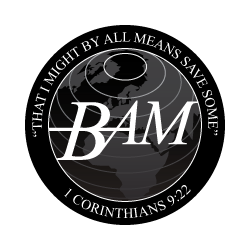The first five books of the OT are known by several titles:
- The books of Moses
- The books of the Law / Torah
- The Pentateuch
The Greek name of the first book is Genesis, which as its title implies is all about BEGININGS.
- Creation
- Humanity’s Failure >
- Fall (Disobedience)
- First Murder
- Increase of Evil
- First Judgment to control the ever-increasing trouble.
- THE FLOOD
- A Fresh Start.
- Noah’s Family
- Babel (Language difference to restrict evil intent)
The focus of the book then moves from the more general view of the world to the formation of the nation through which would come a person who would restore the relationship damaged in ‘The Fall’. It follows key figures:
- Abram (Abraham) – father of many near-eastern nations. (Some of today’s troubles in that area have their roots in this.) Then one of his sons…
- Isaac – Then one of his sons…
- Jacob (also called Israel) and his 12 children who would form the Jewish nation. One of Jacob’s sons is Joseph and Genesis records how and why the family end up living in Egypt.
In the second book (Exodus) the ‘books of Moses’ pick up the story many years (approximately 400) later. The descendants of the family group of around 70 people, known now as the Israelites, had become such a large community that they were considered a threat by the rulers of Egypt. In an attempt to control this perceived threat, the embryo nation was made to work as slaves
- Exodus –
- The escape from being enslaved
- Moses as leader
- The Plagues to force Pharaoh to release the Israelites
- The PASSOVER linked to protection from the 10thplague
- Sinai – The 10 commandments/Laws to maintain good order in the new nation they were being formed into
- The Tabernacle the mobile centre for worship together with rules
- The escape from being enslaved
- Leviticus
- Details of the Laws for community
- Rules for the Religious practice
- Numbers
- Hebrew name – “in the wilderness”. Having failed to enter ‘The Promised Land’ because of fear they are forced to remain nomadic for 40 years.
- Deuteronomy – Second account of the events including the Law (its name translates as second law) and end with the death of Moses.
The next phase is the conquest of the land under the leadership of JOSHUA and the period under the JUDGES. This book ends with the picture of the political set up; “there was no king …everyone did what was right in their own eyes.”
This TRIBAL phase is marked by a repeated cycle of threat from the neighbouring nations, attributed to not remaining faithful to God as instructed in the Mosaic Law, and then those raised up to lead the nation in battle: (Judges)
These leaders are labelled as JUDGES. As this phase draws to its conclusion it is the role the Priest Samuel that is significant. His role included the response to the demand for a King, ‘to be like the other nations’. This moved the nation into the period dominated by the KINGS.
- Othniel (Judah)
- Ehud (Benjamin)
- Shamgar (Naphtali)
- Deborah [and Barak] (Ephraim)
- Gideon (Manasseh)
- Abimelech
- Tola (Issachar)
- Jair (Gilead)
- Jephthah (Gilead)
- Ibzan {Bethlehem}
- Elon (Zebulon)
- Abdon (Ephraim)
- Samson (Dan)
- Saul
- David – The nation became very successful and settled. Jerusalem, captured by him, was made the Capital
- Solomon – Builder of the Temple (based on the Tabernacle which it replaced)
Following Solomon’s reign the nation was divided with nominally the 10 northern tribes forming what is called The Northern Kingdom of Israel and the southern tribes named The Southern Kingdom of Judah (Judah being the main tribal area).
Israel developed its own variant religious practise, denounced as not a true following of the tradition of Moses. There was no consistent succession and several dynasties after the start one king Omri captured Samaria and made it the capital of Israel. The rise of the Assyrian nation, (its Capital, Nineveh, was located near to modern day Mosul , Iraq) was to oppress both Israel and Judah. In 722bce BCE they captured Samaria and as was their practice, they moved / mixed the natives of the countries they dominated.
By contrast the Kings of Judah remained as the dynasty of David. They were oppressed by the Assyrians but were not totally conquered, Jerusalem surviving a siege. The nation imperfectly remained closer to Mosaic tradition. However as a consequence of their ‘unfaithfulness’ they were to face domination too.
The Assyrian Empire fell to the Babylonians (The city of Babylon was located just north of Basra, Iraq). The Babylonians subdued Judah taking many of the top people into Exile. More were taken in a second round and then following continued rebellion Jerusalem and the Temple were destroyed and more taken to Babylonia.
The narrative is found in the books of Samuel, Kings and Chronicles. The books of Chronicles are thought to include a reflection on the historical events from the priests view-point. All the historical records are not ‘history for history’s sake’ but focus on the religious significance of the events.
The Divided Kingdom:
Alongside these books, which are more about events, there are recorded the messages from those described as the prophets, those who instructed and spoke ‘on behalf of The LORD’.
- Jonah – Although his mission is to preach to Israel’s oppressor Assyria (Nineveh) which partly explains his reluctance.
- Amos
- Hosea
- Obadiah (Again a message to the Assyrians that their reprieve (after Jonah) was over.)
- Joel
- Micah
- Nahum
- Habakkuk
- Zephaniah
- Isaiah
- Jeremiah
- Ezekiel (When in Exile)
Exile and Return:
When Judah was overtaken by the Babylonians (c605-586 BCE) It happened in three phases.
- King replaced ‘Top People taken to Babylon (Exile) (c605 BCE)
- More people and temple treasure taken following rebellion
- After further rebellion the temple was destroyed and Jerusalem ‘laid waste’ (586 BCE)
There is a period of some 70 years covered by this EXILE. Three prophets focus on this period.
- Jeremiah – who remained in Judah
- Ezekiel – who was with the exiles in Babylon
- Daniel – who was one on the ‘top people’ and who gets involved with the Babylonian government
When the Babylonian empire fell to the Medes and Persians the Jews are allowed to return (c536 BCE) and many did. Again this took place in three main Phases:
- Jehoshaphat
- Ezra
- Nehemiah
The story of Esther fits into this time period. She becomes the Queen to Xerses. (He is linked to conflicts with Greece) and was instrumental in preventing the nation’s genocide. Other historical events of this period of world history include the deaths of Buddha and Confucius.
While the return to the land was allowed the nation did not regain its power and influence. The messages of the prophets from this period reflect a nation struggling in both its commercial and religious lives.
Post Exilic Prophets:
- Haggai
- Zechariah
- Malachi
Life after the Exile:
A period of Silence:
For the next 400 years there is no record of any prophetic activity of the same type. This is one reason the ministry of John the Baptism stood out. Here was someone ‘like one of the prophets of old’.
During this period the nation was to be subject to two great powers who were to play an important part in the events of the New Testament.
- The Greek Empire – Their legacy was the use of the Greek Language
- The Roman Empire – A significant aspect of their role was the ‘Pax Romana’ which allowed the free movement of people which contributed to spread of Christianity.
The Gospel & Acts:
The gospels record some of the life and teaching of Jesus circa 4BCE -30CE
- His Birth – Matthew and Luke
- At the age of 12 (age of accountability) – Luke
- Aspects of his Life and teaching aged 30-33 – All 4 Gospels
- His death and resurrection – All 4 Gospels
- His ascension – Luke who has more detail in his follow up writing ‘The Acts of the Apostles’
Acts recounts some significant events from the early days as the Christian church begins to form. The initial followers of Jesus did not think of themselves as a new, separate movement because they understood him to be the promised saviour, the Messiah. Here are some of those stages:
- The message about the significance of Jesus is rejected by the religious leaders leading to the persecution of this group they called ‘People of THE WAY’ – later called “Christians”
- Peter was given a vision which showed that what he believed was also for the Non-Jews as well as his own nation
- The conversion of (Saul) Paul leads to another phase as he expands the work which involved setting up churches in non-Jewish (Gentile) countries. Acts contains details of three of his ‘Missionary Journeys’
- Acts ends with Paul under house arrest in Rome.[There is some evidence to suggest that he was released and continued to travel and write until his capture and execution c65CE
The remainder of the NT contains various letters attributed to the apostles and significant leaders of those foundational years. It ends with the visionary document attributed to the Apostle John, “Revelation”, which in part looks to the culmination of the Big Story and the reign of Jesus the Christ.
Beyond the period covered by the books of the bible the early church faced increasing hostility both from the Jewish faith leaders and the Roman authorities.
The continued Jewish rebellion against Roman control resulted in the destruction of the Temple in 70CE which ended the traditional Jewish religious practice.
In 325CE The Roman Emperor Constantine adopted Christianity as the State Religion – the birth of Christendom?
These early centuries contained many challenges for the early church, both from opposition from outside powers and various interpretations of the message handed down from within. The teaching of many of the groups that emerged were considered heresies and resulted in discussions to define what would be defined as Orthodox Christianity.
The Early days of the Church:

 by: Paul GildersleveReturn to:
by: Paul GildersleveReturn to: